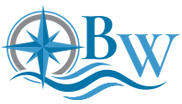Core Portfolio Design
 We design our Core Portfolios based on our ACTION framework. Our Core Portfolios are very diversified, low cost, and adaptable. They range from 20% stocks up to 100% stocks.
We design our Core Portfolios based on our ACTION framework. Our Core Portfolios are very diversified, low cost, and adaptable. They range from 20% stocks up to 100% stocks.
Asset Allocation
The overall allocation, whether conservative, moderate, or aggressive, is extremely diversified. It is not uncommon to have over 10,000 different stocks and bonds in the portfolio.
The design for the most part is “market weighted”, meaning we try to match the weightings of the various asset classes in the market.
- Within US stocks, large-caps represent 75%, mid-caps about 17.5% and small-caps about 7.5%.
- International stocks make up 45% of the global market capitalization, however, we typically only allocate 20% of stock into international markets because many larger US companies are also global.
- Developed markets make up about 75% of the international stock market with emerging markets comprising the other 25%.
- Growth, blend and value asset classes are equally weighted.
- Real assets (real estate, infrastructure, etc.) make up about 10% of stocks.
- Notable sectors are technology at 20%, communications at 10% and healthcare at 15%.
- 92.5% of bonds are investment grade credit quality. The other 7.5% are considered high yield (lower quality) bonds.
- Overall, alternatives (precious metals, preferred stock, etc.) make up about 9% of the non-stock portfolio. More aggressive portfolios have barely any alternatives while more conservative portfolios hold more alternatives.
Cost
Your portfolio is implemented with no-commission, low-cost investment options. The expense ratio of Core Portfolios usually ranges from 0.08% to 0.15%. We also use funds with more liquidity to avoid higher bid-ask spreads (difference between purchase price and sales price). Blue Water’s advisory fees are quite competitive vs their peers.
Taxes
Asset location (which investments go in which accounts) can play an important part of your current and future tax impact. Investments that produce more income such as real estate and bonds should be held in a tax-deferred account like and an IRA or 401(k). Municipal bonds, growth stocks and other low-income producing investments should be held in taxable accounts. Roth IRAs, because they grow tax-free, should mainly hold high growth investments.
Be smart about your sales in taxable accounts. Try to rebalance in tax-deferred or tax-free accounts to avoid creating capital gains. If necessary, make sure your sales are at least taxed as long-term gains (held for 1 year+).
Taxable accounts should also be constantly monitored for tax losses. These tax losses can offset future capital gains and help reduce your taxes. Proceeds from investments that are sold can be used to purchase similar investments to maintain your allocation. You wouldn’t want to sell a US large blend stock fund and buy an international small-cap fund or a bond fund. You would want to buy a similar, yet different, US large blend fund.
Taxes also pay a part of future contributions and distribution management. If you only save into a 401(k), then when you retire, you won’t have much flexibility with being able to control your taxes. Your withdrawals will be taxed as ordinary income, and you may have to draw out a lot more than you think in order to pay taxes on the withdrawal. Having different types of accounts (IRA, taxable, tax-free) will provide for more tax flexibility in retirement.
Inflows
Contributions are used to help keep your portfolio balanced, so we don’t need to trade as much and incur trading fees, bid-ask spreads, and taxes. As mentioned above, determining which accounts you contribute to can also help manage current and future tax liabilities.
Outflows
Tax management and rebalancing are integrated into withdrawals. An Income Ladder strategy is used for those approaching, or in retirement. This strategy dedicates a portion of your portfolio to hold shorter-term CDS and bonds that mature at various future dates. It helps deliver the necessary income when you need it, but yet keeps the rest of the portfolio working for you in the meantime. It also helps you weather down markets (and having to sell stocks) by providing for a number of years’ worth of income. If you needed $5,000/month from the portfolio, we may have around $200,000 in an Income Ladder. This would provide for a little over 3 years of safer, predictable income ($200,000 / $5,000 = 40 months). Over time, we replenish the ladder with dividends, interest, and capital gains.
Nerves
You can't control which way the market moves, but you can control how you react to it. Your behavior will directly affect your investment results.
We view this as a team effort. We want to hear how you are doing and what you think of the market and events. In turn, you want to hear our thoughts and guidance. It’s important for both of us to be involved in the feedback loop.
Don’t be fearful or greedy. Relax, knowing that you’ve implemented all the essential ACTIONS. You have a globally diversified, low-cost, and tax-efficient portfolio. Markets will still be choppy from time to time, but we find clients are less anxious when they understand the thought process behind the design of their portfolio.

